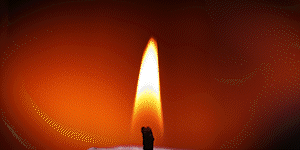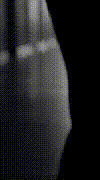MaltyMcFry
Registered User
- Joined
- Jan 7, 2016
- Messages
- 2
- Points
- 0
There are many different types of hairbrushes on the market.
You have a vented brush, a cushioned brush, a round brush, a shower brush plus various types of combs in different styles and shapes.
The bristle material is also equally important, as one can buy a thermoplastic bristle, nylon, boar hair, porcupine i.e 'tufted bristle', and metallic.
When buying a brush, consideration must be taken for your personal preferences.
Of course, each type of brush produces a different type of tickling effect, and so each type of brush is a winner in it's own right.
Personally, I like the slow and torturously teasing type of tickle, that requires oiled soles and a brush that glides playfully over and around, in between and underneath, tracing the wrinkles like a calligrapher's quill.
For this, flexible bristles that are longer, more slender and have adequate spacing provide the desired effect. Having a smooth round knob at the end of the bristles is perfect for the gliding effect without causing scratching or irritation.
Spacing is actually quite important, since the nerves in our feet are spaced further apart than our fingertips/hands. So I modify the brush by cutting away the unwanted bristles to provide the desired spacing.
When 3D printing becomes more affordable and widespread, we can all share our perfect tickling tool designs. Until then:
What makes the best brush and technique for you?
You have a vented brush, a cushioned brush, a round brush, a shower brush plus various types of combs in different styles and shapes.
The bristle material is also equally important, as one can buy a thermoplastic bristle, nylon, boar hair, porcupine i.e 'tufted bristle', and metallic.
When buying a brush, consideration must be taken for your personal preferences.
- Should the bristles be slender and flexible, or stubby and stiff?
- Should the bristles be spaced further apart or closer together?
- Should the handle be long and held like a bat, or short and inserted between the middle fingers?
- Do you want the brush to be cylindrical and have bristles all over?
- Or do you want a flat-base with bristles on only one side?
- Do you want the base to have cushioning so the bristles pinch together under compression?
- Perhaps you would prefer a brush with a pointed handle that can be used as a tool also?
Of course, each type of brush produces a different type of tickling effect, and so each type of brush is a winner in it's own right.
Personally, I like the slow and torturously teasing type of tickle, that requires oiled soles and a brush that glides playfully over and around, in between and underneath, tracing the wrinkles like a calligrapher's quill.
For this, flexible bristles that are longer, more slender and have adequate spacing provide the desired effect. Having a smooth round knob at the end of the bristles is perfect for the gliding effect without causing scratching or irritation.
Spacing is actually quite important, since the nerves in our feet are spaced further apart than our fingertips/hands. So I modify the brush by cutting away the unwanted bristles to provide the desired spacing.
When 3D printing becomes more affordable and widespread, we can all share our perfect tickling tool designs. Until then:
What makes the best brush and technique for you?






